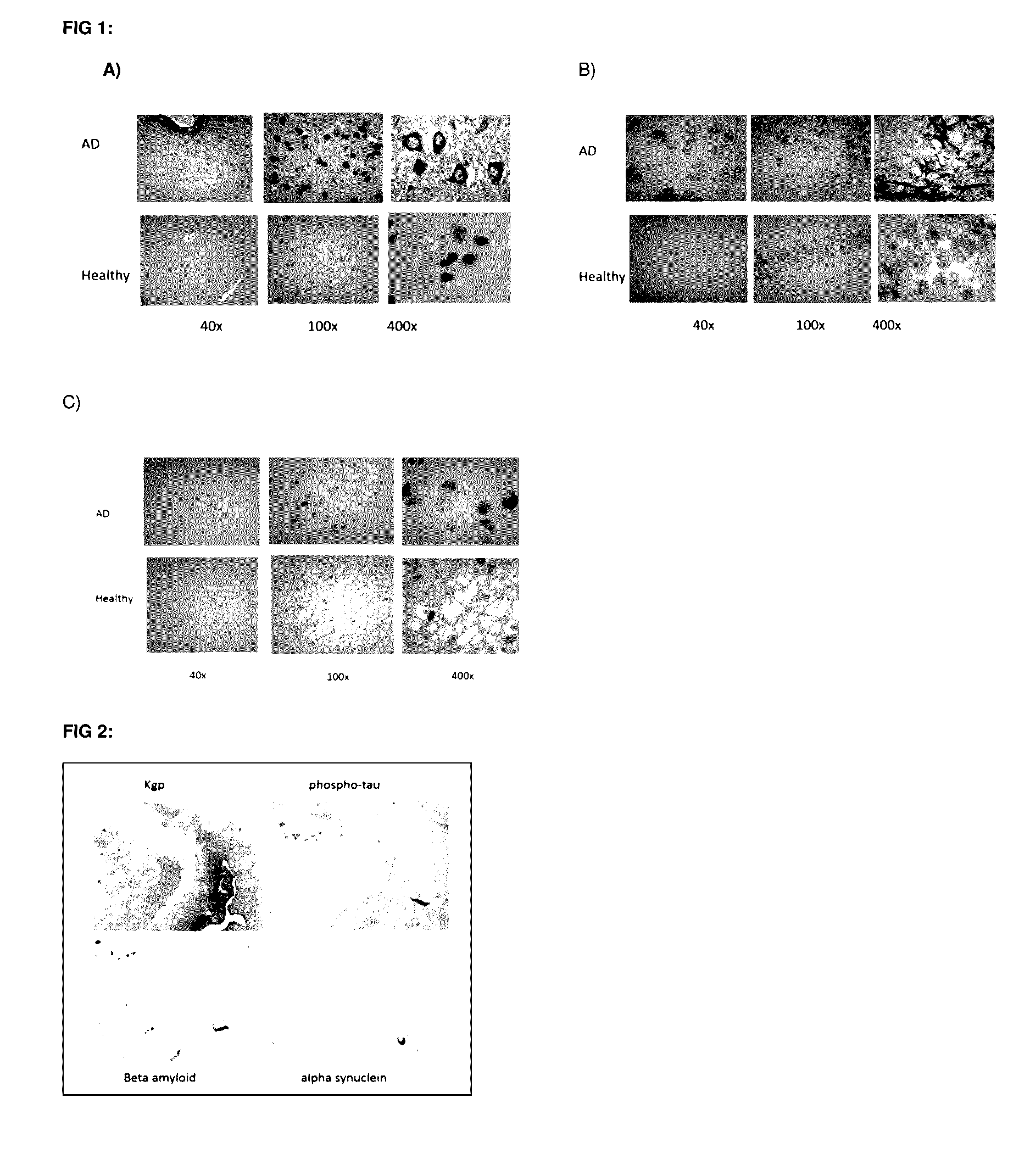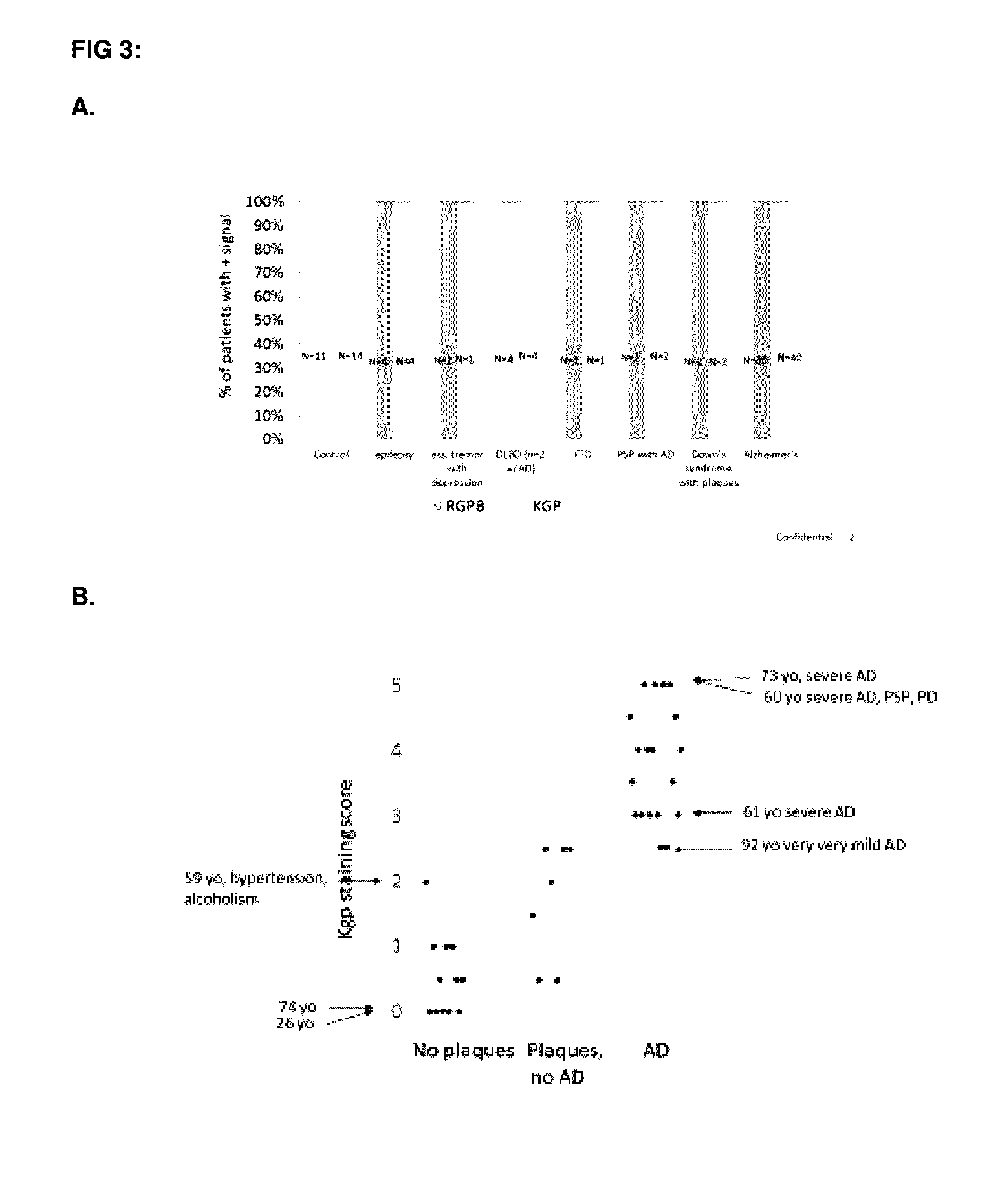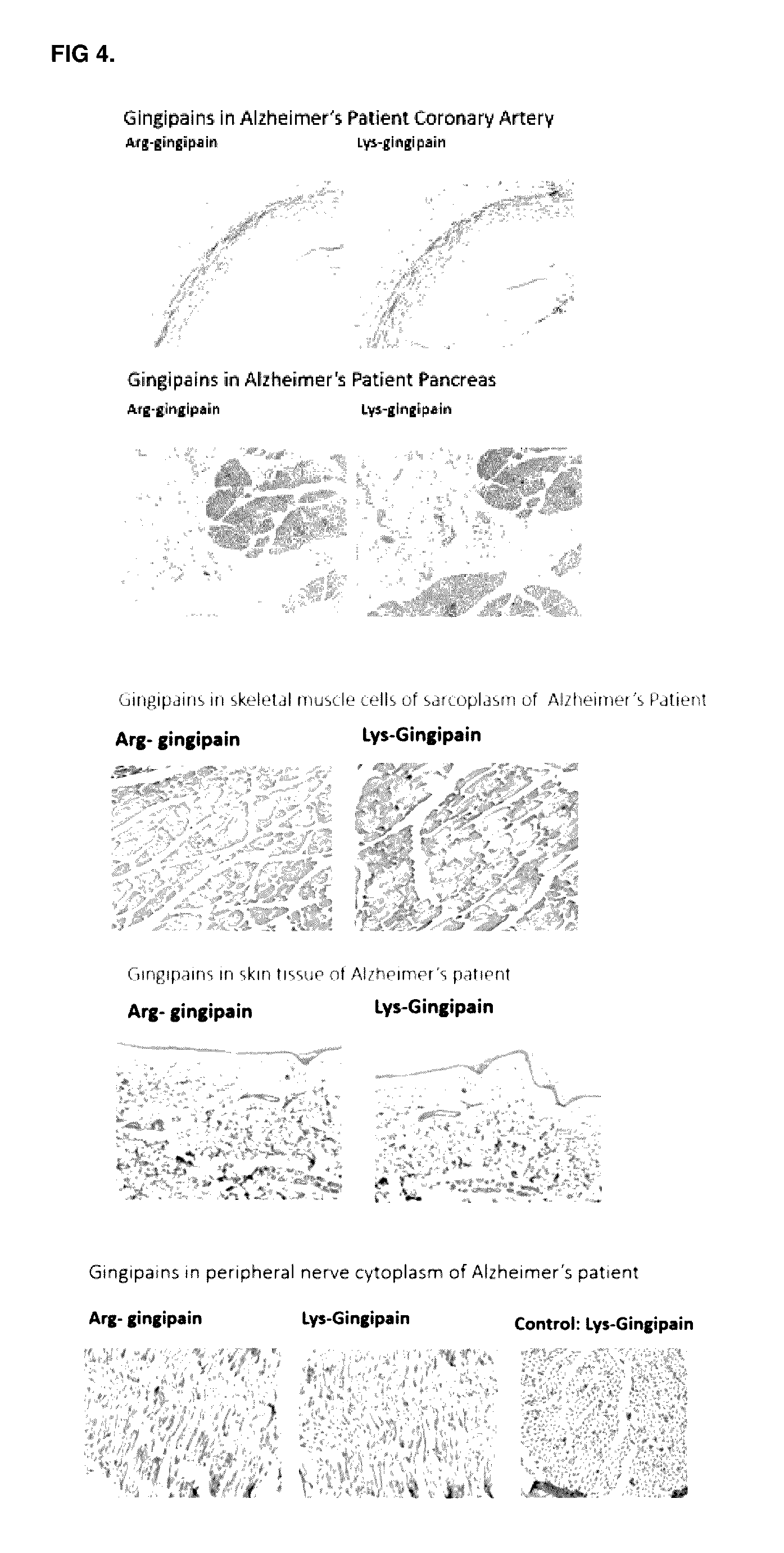Methods of use for therapeutics targeting the pathogen porphyromonas gingivalis
a technology of porphyromonas gingivalis and therapeutics, which is applied in the field of therapeutics targeting the pathogen porphyromonas gingivalis, can solve the problems of not being able to establish a direct connection between brain disorders and pathogenic moiety, methods for developing treatments or diagnostics based on a specific target, and being at risk for dementia. , people who lost more than half their teeth at age 35, and had a greater risk of developing alzheim
- Summary
- Abstract
- Description
- Claims
- Application Information
AI Technical Summary
Benefits of technology
Problems solved by technology
Method used
Image
Examples
example 1
[0157]FIGS. 1 & 3 present examples and a summary of human autopsy immunohistochemistry findings, respectively. Kgp has been positively identified in brain samples from patients with neurological disorders as follows: 40 / 40 Alzheimer's disease patients, 10 / 10 reportedly presymptomatic patients with Alzheimer's pathology (abeta plaques), 2 / 2 progressive supranuclear palsy patients with co-morbid Alzheimer's, 1 / 1 frontal temporal dementia patient, 1 / 1 Parkinson's patient with co-morbid Alzheimer's and Lewy body disease, 4 / 4 patients with dementia with Lewy body disease (2 with co-morbid Alzheimer's), 1 / 1 essential tremor patient with depression, 2 / 2 Down's syndrome patients with abeta plaques 33-34 years of age, 4 / 4 epilepsy patients. In reportedly healthy controls (age 11-74 years old): 5 / 13 brains were negative for staining, 4 / 13 brains have trace staining, and the remaining 4 / 13 had Kgp staining higher than trace levels, but lower than cases with brain disease (FIG. 3).
example 2
[0158]Peripheral tissue specimens including skin, pancreas, coronary artery, muscle and peripheral nerve were selected from an 89 year old Alzheimer's patient analyzed with immunohistochemistry for Kgp and RgpB. The pathology report states that the hippocampus and entorhinal cortex, contained frequent neuritic plaques and tau proteins frontal lobe cortex. Frontal Cortex contains neuritic plaques, neurofibrillary tangles, and amyloid angiopathy. CERAD Stage VI, BRAAK Stage 6, and amyloid angiopathy of small vessels in the brain. All peripheral tissues show staining for Kgp and RgpB indicating that gingipain induced cell degeneration may be responsible for co-mordities of Alzheimer's including cardiovascular disease, diabetes, arthritis, retinal disorders and peripheral nerve disorders (FIG. 2).
example 3
[0159]Adult male mice (CD-1, 25 g approximately) n=6 per group were anaesthetized and injected unilaterally intrahippocampally using standard stereotaxic techniques. Gingipains RgpB and Kgp, purified from P. gingivalis and provided by Dr. Jan and Barbara Potempa, were diluted prior to injection to 10 ug / ml. Seven days post-surgery the animals were anaesthetized, perfused and humanely killed and brains removed and sectioned for histological analysis. Fluoro-Jade staining was then be performed on sections of hippocampus to assess for neurodegeneration (Schmued L C and Hopkins K J, 2000). Fluoro-Jade staining identifies cell bodies, dendrites, axons and axons terminals of degenerating neurons but does not stain healthy neurons, myelin, or vascular elements.
[0160]Brain sections were examined with an epifluorescence microscope (Nikon Microphot FXA) using a filter system suitable for visualizing fluorescein or fluorescein isothiocyanate (FITC). Images were acquired with a Leica DC Camera ...
PUM
| Property | Measurement | Unit |
|---|---|---|
| Molar density | aaaaa | aaaaa |
| Therapeutic | aaaaa | aaaaa |
Abstract
Description
Claims
Application Information
 Login to View More
Login to View More - R&D
- Intellectual Property
- Life Sciences
- Materials
- Tech Scout
- Unparalleled Data Quality
- Higher Quality Content
- 60% Fewer Hallucinations
Browse by: Latest US Patents, China's latest patents, Technical Efficacy Thesaurus, Application Domain, Technology Topic, Popular Technical Reports.
© 2025 PatSnap. All rights reserved.Legal|Privacy policy|Modern Slavery Act Transparency Statement|Sitemap|About US| Contact US: help@patsnap.com



